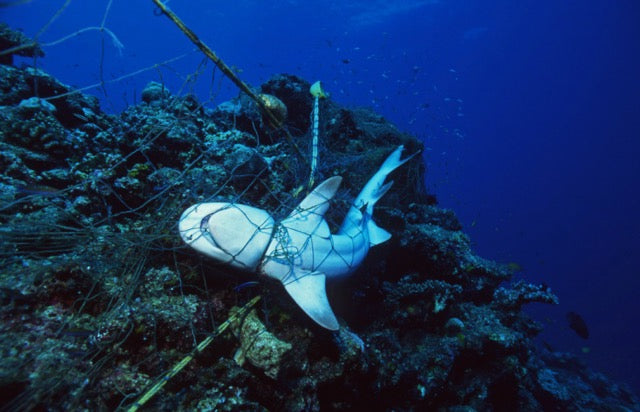3 MIN READ
11-15-2024
Ghost Nets: The Silent Killers Lurking on Sumbul Beach
Kubik, 4ocean Bali Content Correspondent
Sumbul Beach, a peaceful stretch of sand on Indonesia's western coast, is known for its serene beauty and clear waters—but beneath its tranquil surface, a silent crisis is unfolding. On November 4, 2024, a group of passionate environmentalists, the Medewi Beach cleanup crew, gathered to confront one of the ocean’s most insidious threats: ghost nets. These seemingly harmless pieces of fishing gear are anything but, and what the team uncovered that day was nothing short of alarming.
As the crew combed the beach from one end to the other, the stark reality of the situation became clear. Time and time again, they found remnants of lost or abandoned fishing nets—some tangled with plastic, wood, fabric, and even ropes. These nets, left to float aimlessly in the ocean or wash ashore, are called "ghost nets" because they continue to trap and kill marine life long after they've been discarded.
Removing these tangled nets from the beach is no easy task. Often, the nets are not alone—they’re wrapped up in a dense mess of other debris, including wood, plastic, and fishing lines. It’s like wrestling with an angry sea monster, each piece of detritus complicating the process further. To deal with this, the team comes prepared, armed with knives and cutting tools to tackle even the toughest debris. It’s a labor-intensive process that requires patience, skill, and determination.
One of the most striking things about ghost nets is that they’re invisible to the casual beachgoer. They don’t float on the surface like plastic bottles or cans; they’re submerged in the water, often hiding just below the waves. Even when they wash ashore, they’re often hidden beneath layers of other debris, easily overlooked. Yet, their impact is devastating, both to marine life and to the health of coastal ecosystems. These nets, many made from non-biodegradable materials like nylon, can last for decades in the ocean, continuing to trap and kill marine creatures long after they’ve been discarded.
The crew's work that day was a sobering reminder of the environmental cost of lost fishing gear. Yet, it was also a hopeful one—by clearing the nets, they were taking active steps to restore the balance of marine life and reduce the damage to the coastal habitat. But this is just one small part of the larger fight. Ghost nets continue to be a largely ignored aspect of marine pollution, with little infrastructure in place to properly dispose of or recycle them.

Ghost Net Bracelet
Pull 5 Pounds of Trash From The Ocean With Our Ghost Net Bracelets.
Shop Now - Clean the OceanGhost Net Bracelet
Shop Now - Clean The OceanAs the sun set on Sumbul Beach, the team packed up their tools, tired but determined. The work was far from over. Ghost nets are just one piece of the puzzle when it comes to protecting our oceans, but they’re among the most dangerous and insidious threats. While the team’s efforts are vital, this problem requires a global solution—a more sustainable approach to fishing practices, greater awareness about marine debris, and a concerted effort to tackle this silent killer before it’s too late.











